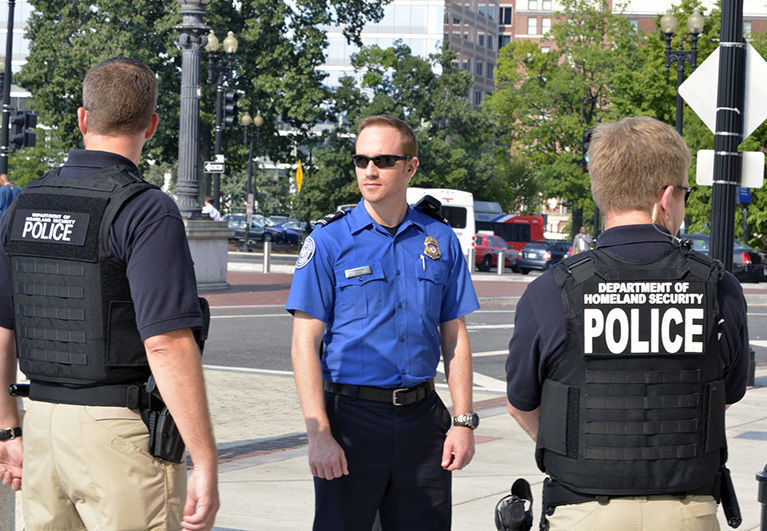
VERO BEACH — Members of the same tactical security team that helps guard the Super Bowl and the Presidential Inauguration can be seen, at times, on patrol at the Vero Beach Regional Airport.
It’s just one of the many changes since December when Vero added commercial passenger airline service three to four days per week via Elite Airways, said Airport Director Eric Menger.
The police squad, which has a tongue-twisting name with a James-Bondish acronym – Transportation Security Administration Visible Intermodal Prevention and Response Team (VIPR) – works with airport personnel and local law enforcement when they’re in town.
“The VIPR team is a subsection of TSA that is there right now with weapons at Vero Beach Airport in combat-type gear to provide a visible security deterrent,” Menger told city officials the morning of July 15 when four members of the VIPR team conducted operations in Vero.
“This is new to us,” Menger said. “We’ve still got of course the Vero Beach Police Department, and we’ve got the normal TSA guys, but now we’ve got VIPR periodically coming by, and those guys do provide that visual deterrent. I think a lot of it just has to do with world events . . . they’ve kind-of stepped that up a little bit.”
Six members of VIPR provided support for the Vero Beach Air Show in June, Menger said, due to the size of the crowds.
More than 50,000 people typically swarm the airport for the show, which takes place every other year. “That’s just one of the changes that are happening thanks to commercial airline service [returning to Vero Beach],” Menger said.
When a VIPR team visited Vero recently, they brought highly sensitive radiation-detection equipment and combed the airport property, according to Assistant Airport Director Todd Scher.
Though they are dressed and equipped to respond to whatever chaos might break out in the large metropolitan airports, train stations and public events they guard, the VIPR team also does outreach and mixes it up with the public, especially kids, in an effort to educate travelers about their purpose for being there.
While the sight of armed officers in tactical gear might cause some travelers to bristle – especially at a smaller airport like Vero – the intention is to make passengers feel safer.
The team is meant not only as an extra set of eyes and ears, but as a show of force and readiness.
Scher said the VIPR advance team coordinator contacts him to let him know the team will be conducting an operation in Vero, and when in town, VIPR works alongside at least one officer from the Vero Beach Police Department, the primary agency tasked with airport security.
Depending upon the day’s orders, VIPR may use specialized equipment like the radiation detectors or bomb-sniffing K-9 patrols to make sure the airport is secure.
According to the TSA, the team has been around for 12 years. “Following the 2004 Madrid train bombings which killed 191 people and wounded 1,800 more, TSA developed the VIPR program to help out law enforcement when needed.
Since then, the teams have been deployed at the request of local, state and federal law enforcement to support their efforts and enhance the security presence during specific alert periods or major high-profile events,” the TSA states on its website.
After the mass-casualty shooting at the Pulse nightclub in Orlando in June, the VIPR team was deployed to Orlando’s airports and mass transit hubs in an effort to allay fears visitors might have about the city’s safety.
The “team” can draw personnel from a variety of agencies, including the Federal Air Marshals, and often includes explosives experts and behavior detection officers, according to the TSA.
Depending on the situation and the perceived threat, VIPR may assist in screening passengers, patrol airport concourses or canvass aircraft and airport facilities.
The Vero Beach Regional Airport opened in 1930 and has been operating continually for 86 years. It served as a Naval Air Station throughout World War II and was deeded to the City of Vero Beach in 1947.
The airport property encompasses nearly 1,700 acres and handles approximately 185,000 take-offs and landings annually on its three runways, which have a total length of 16,000 feet.



